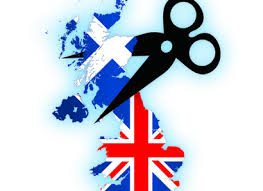 The 24th of March 2016 could be Scotland’s Independence Day if Scots vote ‘Yes’ in next September’s referendum. However, the skirling of bagpipes to herald the birth of a new nation can barely be heard in the far distance. The most recent poll shows the ‘Yes’ campaign continuing to trail the ‘Better Together’ campaign by 9%, with 38% of voters intending to vote ‘Yes’, 47% inclined to vote ‘No’ and 15% undecided. With almost half of voters remaining in the ‘No’ camp, the future of the union looks secure. However, demographic complexities behind this once-in-a-generation referendum may make standard polling techniques unreliable.
The 24th of March 2016 could be Scotland’s Independence Day if Scots vote ‘Yes’ in next September’s referendum. However, the skirling of bagpipes to herald the birth of a new nation can barely be heard in the far distance. The most recent poll shows the ‘Yes’ campaign continuing to trail the ‘Better Together’ campaign by 9%, with 38% of voters intending to vote ‘Yes’, 47% inclined to vote ‘No’ and 15% undecided. With almost half of voters remaining in the ‘No’ camp, the future of the union looks secure. However, demographic complexities behind this once-in-a-generation referendum may make standard polling techniques unreliable.
The left-wing Radical Independence movement has presented the referendum as a ‘class conflict’ in which the rich promoted a ‘no’ vote to maintain their privilege. In reality, the battle lines are less clearly drawn. Research conducted by the eminent psephologist, Professor John Curtice, found that middle class people needed more reassurance than their working class compatriots that independence would not have an adverse effect on the country’s economy. However, if citizens could be guaranteed that they would be £500 a year richer under independence, the results would be turned on their head. If the ‘Yes’ campaign can make a better economic case for independence, or if fear of the UK leaving the EU becomes real, the economic calculus may change.
A further demographic curveball is the inclusion of 16 and 17-year-olds in the franchise. Standard opinion polls do not include under-18s, and little is known about their voting intentions. Traditional polling shows high levels of support for independence amongst 18-24 year-olds, but an Aberdeenshire Schools Referendum found that a large majority of secondary school pupils opposed independence. It is unknown if these results would be replicated in other regions. Overall, however, there may be one million people voting for the first time in the 2014 referendum, introducing an unprecedented level of uncertainty.
Furthermore, the Secretary of State for Scotland, Alistair Carmichael MP, has warned that there are large numbers of undecided former Labour voters in the “urban post-industrial belt of Scotland”. This group of voters became dissatisfied with the Westminster government during the Thatcher era, felt forgotten by New Labour, and voted Scottish Nationalist Party (SNP) en-masse in the 2011 Scottish Parliament election. Their loyalties to Labour, and possibly also the UK, have loosened over time, but this phenomenon may be under-represented in the polling data, which has focussed on voters who claim that they will definitely vote. As acknowledged by the polling company Panelbase, “all pollsters are in pretty unchartered territory.”
Tomorrow the Scottish Government will publish its long-awaited White Paper on Independence. Nicola Sturgeon, the Deputy First Minister, has promised to “answer a range of detailed questions that we have been asked.” However, many of the biggest questions remain unanswerable. How would the rest of the UK react to a ‘yes’ vote? Would they agree to the high levels of cooperation proposed by the SNP? And what of the forthcoming ‘in-out’ referendum on European Union membership, which may result in the UK leaving the EU against Scotland’s wishes? And most importantly, do Scots believe that they would thrive, rather than simply survive, outside the UK?
At the current time, many Scots are simply hoping that the quality of the debate, which has so far been pitiful, will improve.




No Comment